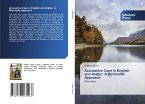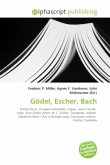The accusative case of a noun is the grammatical case used to mark the direct object of a transitive verb. The same case is used in many languages for the objects of prepositions. It is a noun that is having something done to it, usually joined with the nominative case. The accusative case exists in all the Indo-European languages, in the Finno-Ugric languages, and in Semitic languages. Balto-Finnic languages, such as Finnish and Estonian, have two cases to mark objects, the accusative and the partitive case. In morphosyntactic alignment terms, both perform the accusative function, but the accusative object is telic, while the partitive is not.







